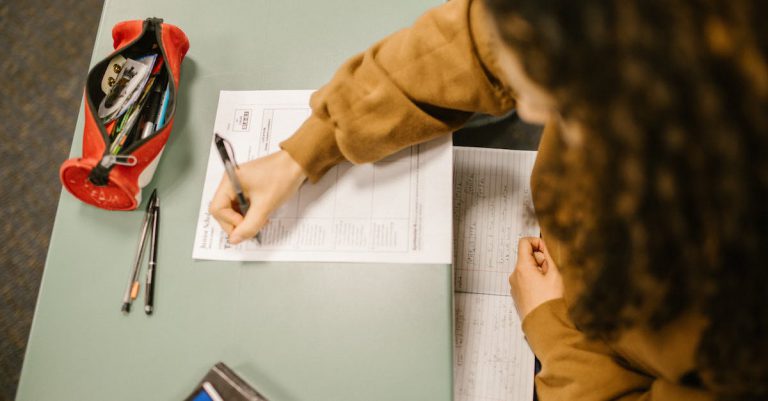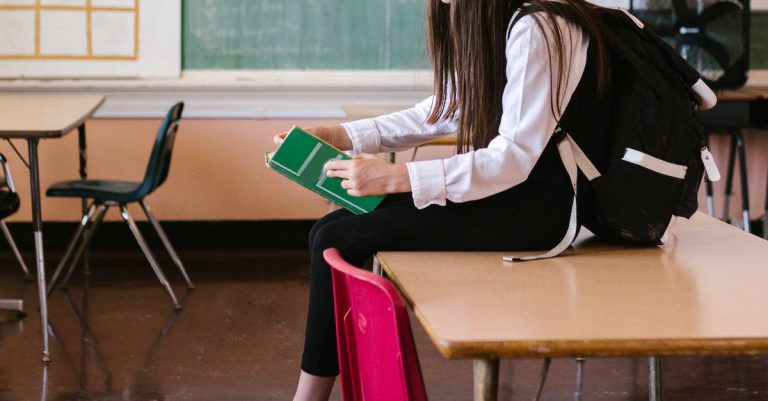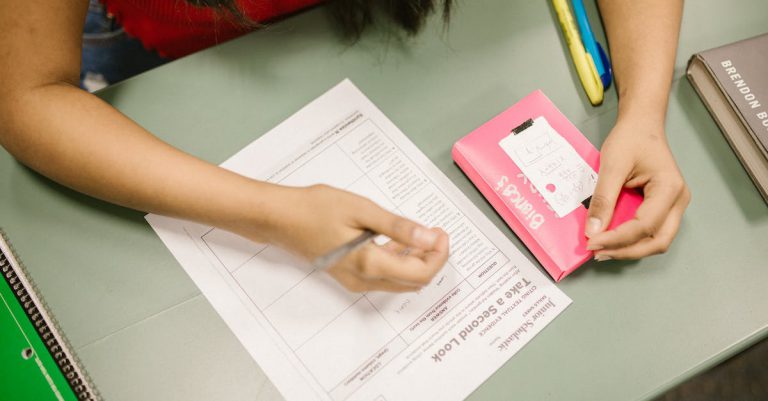Slow internet connection is a common problem that students and teachers face in school. It can be frustrating when you need to access online resources or submit assignments, but the WiFi is too slow or not working properly.
If you’re short on time, here’s a quick answer to your question: school WiFi is often slow due to a combination of factors, including outdated infrastructure, insufficient bandwidth, and heavy usage.
In this article, we will explore the reasons why school WiFi is so bad and provide some solutions for improving it. We will also discuss the impact of slow internet on learning and how it can be addressed.
So, let’s dive in and find out why school WiFi is so bad.
Outdated Infrastructure
One of the main reasons why school WiFi is often slow and unreliable is due to outdated infrastructure. This includes old routers and switches that are incapable of handling the amount of traffic that modern devices generate.
Old routers and switches
The routers and switches used in many schools were installed years ago and were not designed to handle the number of devices that currently connect to them. These outdated devices may have slower processing speeds and limited bandwidth, which can cause slow internet speeds and frequent drops in connection.
Lack of proper maintenance
Another issue with school WiFi infrastructure is the lack of proper maintenance. Without regular updates and maintenance, routers and switches can become bogged down with old data and settings, causing them to perform poorly. Additionally, if hardware fails, it may not be replaced in a timely manner, leading to further connectivity issues.
Inability to support modern technology
The final issue with outdated infrastructure is the inability to support modern technology. As schools increasingly adopt new devices and software, the WiFi infrastructure may struggle to keep up. For example, the older routers and switches may not support newer encryption standards or may not be able to handle the increased traffic from streaming services or video conferencing.
Insufficient Bandwidth
One of the main reasons why school WiFi is so bad is due to insufficient bandwidth. Bandwidth refers to the amount of data that can be transmitted over a network connection at any given time. When there is not enough bandwidth to accommodate heavy usage, the network can become slow and unreliable.
Not Enough Bandwidth to Accommodate Heavy Usage
With the increasing use of technology in schools, students and teachers are relying more and more on WiFi to access online resources, collaborate with others, and complete assignments. This heavy usage can quickly overwhelm a network that does not have enough bandwidth to support it, leading to slow or dropped connections.
According to a study conducted by Education SuperHighway, only 39% of K-12 school districts in the United States have enough bandwidth to support digital learning. This means that the majority of schools are struggling to provide their students and teachers with reliable internet access.
Inadequate Network Design
Another reason why school WiFi may be slow or unreliable is due to inadequate network design. The layout and structure of a network can greatly impact its performance. A poorly designed network can lead to dead zones, interference, and other issues that can affect connectivity.
It is important for schools to work with experienced network engineers who can design a network that is optimized for their specific needs. This may involve adding access points, adjusting antenna placement, or implementing other solutions to improve coverage and performance.
Poor Network Configuration
Finally, poor network configuration can also contribute to slow and unreliable school WiFi. This can include issues such as outdated firmware, mismatched settings, or improper security protocols.
Regular network maintenance and updates are essential for ensuring that a school’s WiFi network is running smoothly. This may involve updating firmware, adjusting settings, and implementing security measures to protect against cyber threats.
By addressing these issues and investing in high-quality network equipment and maintenance, schools can provide their students and teachers with the reliable WiFi access they need to succeed in today’s digital world.
Heavy Usage
School WiFi is often slow and frustrating. One of the main reasons for this is heavy usage. Students and teachers are all using the WiFi at the same time, which can put a strain on the network. Here are some factors that contribute to heavy usage:
Too many devices connected to the network
With the rise of digital learning, students are bringing more devices to school than ever before. Laptops, tablets, and smartphones are all fighting for bandwidth on the school’s WiFi network. The more devices that are connected, the slower the network becomes. Schools need to upgrade their WiFi infrastructure to accommodate the increasing number of devices.
Streaming videos and playing games
Students like to use their free time to watch videos and play games on their devices. However, streaming video and online gaming consume a lot of bandwidth and can slow down the network for everyone else. Schools should consider implementing content filters to limit access to non-educational websites during school hours.
Downloading large files
Students and teachers often need to download large files, such as videos or software, for their coursework. However, downloading large files can take up a lot of bandwidth and slow down the network. Schools should consider implementing a download manager to limit the number of large files that can be downloaded at the same time.
According to a report by the Consortium for School Networking, only 39% of school districts in the United States have enough bandwidth to support digital learning.
By understanding the reasons for heavy usage, schools can take steps to improve their WiFi networks and provide a better learning experience for their students.
Solutions for Improving School WiFi
Slow and unreliable school WiFi can be a major source of frustration for students and teachers. Fortunately, there are several solutions that can help improve WiFi performance and reliability.
Upgrading the infrastructure
One of the most effective solutions for improving school WiFi is upgrading the infrastructure. This may involve replacing outdated equipment, such as routers and access points, with newer, more powerful models. It may also involve installing additional equipment to ensure adequate coverage throughout the school.
According to a study by the Consortium for School Networking, schools with high-performing WiFi networks tend to have more access points per student and higher-quality equipment. Investing in better infrastructure can be costly, but it can pay off in the long run by providing faster and more reliable WiFi for students and teachers.
Increasing bandwidth
Another solution for improving school WiFi is increasing bandwidth. Bandwidth refers to the amount of data that can be transmitted over a network at one time. Schools with inadequate bandwidth may experience slow speeds and dropped connections, especially during peak usage times.
According to the Federal Communications Commission, schools should aim for a minimum of 100 kbps per student to support basic digital learning activities. However, many schools find that they need much more bandwidth to support the increasing number of devices and applications on their networks.
Implementing network management tools
Implementing network management tools can also help improve school WiFi performance. Network management tools allow IT staff to monitor and control network traffic, prioritize certain types of traffic, and identify and resolve issues more quickly.
For example, Quality of Service (QoS) tools can be used to prioritize education-related traffic, such as online testing, over other types of traffic, such as streaming video. This can help ensure that critical activities are not disrupted by non-essential traffic.
Limiting access to certain websites
Finally, limiting access to certain websites can help improve school WiFi performance. Some websites, such as streaming video and social media sites, can consume large amounts of bandwidth and slow down the network for everyone.
Many schools use web filtering tools to limit access to non-educational websites and applications during school hours. This can help ensure that bandwidth is being used for educational purposes and can also help protect students from inappropriate content.
| Solution | Advantages | Disadvantages |
|---|---|---|
| Upgrading the infrastructure | Provides faster and more reliable WiFi | Can be costly |
| Increasing bandwidth | Supports more devices and applications | Can be expensive |
| Implementing network management tools | Allows IT staff to monitor and control network traffic | May require additional training |
| Limiting access to certain websites | Reduces non-educational traffic | May limit access to some educational resources |
The Impact of Slow Internet on Learning
Slow internet is a common problem faced by students and teachers in schools. It can result in frustrating experiences such as slow loading times, interrupted connection, and limited access to online resources. However, slow internet can have a more significant impact on learning than just inconvenience. Here are some of the ways in which slow internet can negatively affect student learning:
Reduced productivity
Slow internet can lead to reduced productivity for both students and teachers. For example, students may take longer to complete online assignments, and teachers may have difficulty accessing online resources for lesson planning. This can lead to a decrease in the amount of work that can be accomplished during class time, which can result in a lower quality of education overall.
Missed opportunities for interactive learning
The internet has opened up many opportunities for interactive learning, such as online discussions and collaborative projects. However, slow internet can make it difficult for students to participate in these activities. This can lead to missed opportunities for students to engage with their peers and develop their critical thinking skills.
Negative impact on student motivation
Slow internet can also have a negative impact on student motivation. When students are unable to access online resources or complete online assignments, they may become frustrated and disengaged from the learning process. This can lead to a decrease in student motivation and a lower quality of work.
It is important for schools to prioritize fast and reliable internet access in order to provide students with the best possible learning experience. Schools should consider investing in high-speed internet connections and implementing measures to ensure that the internet is accessible to all students and teachers. By doing so, schools can help to ensure that students have access to the resources they need to succeed.
Addressing Slow Internet in Schools
School WiFi can be frustratingly slow, especially when students and teachers are trying to access important resources and complete online assignments. Slow internet can lead to wasted time, decreased productivity, and a lack of motivation among students and staff. Here are some solutions that can help address the issue:
Collaboration between IT departments and educators
One of the main reasons for slow school WiFi is a lack of collaboration between IT departments and educators. IT departments are responsible for maintaining and upgrading the school’s WiFi infrastructure, but they may not have a clear understanding of the specific needs of teachers and students. Educators, on the other hand, may not be aware of the technical limitations and requirements of the school’s network. By working together, IT departments and educators can identify and address issues that are causing slow internet and find solutions that meet the needs of everyone involved.
Prioritizing funding for WiFi upgrades
Another important solution is to prioritize funding for WiFi upgrades. Many schools have outdated WiFi infrastructure that simply cannot handle the number of devices and users that are accessing the network. Upgrading to more advanced technology can help increase internet speeds and improve overall network performance. While funding may be limited, it’s important for schools to recognize the value of investing in their WiFi infrastructure to ensure that students and teachers have access to reliable and fast internet.
Encouraging responsible internet usage
Finally, schools can help address slow internet by encouraging responsible internet usage. Students and staff may be using the network for non-educational purposes, such as streaming videos or playing games, which can slow down the network for everyone else. By establishing clear guidelines for internet usage and enforcing them, schools can help ensure that the network is being used for educational purposes and is not being slowed down by unnecessary traffic.
Conclusion
Slow internet can be a major obstacle to effective learning in schools. Outdated infrastructure, insufficient bandwidth, and heavy usage are some of the factors that contribute to slow WiFi.
However, by upgrading the infrastructure, increasing bandwidth, and implementing network management tools, schools can improve their internet connection and provide students with a better learning experience.
Addressing the issue of slow internet in schools requires collaboration between IT departments and educators, as well as prioritizing funding for WiFi upgrades and encouraging responsible internet usage.
By taking these steps, we can ensure that students have access to reliable and fast internet, which is essential for their academic success in today’s digital world.






